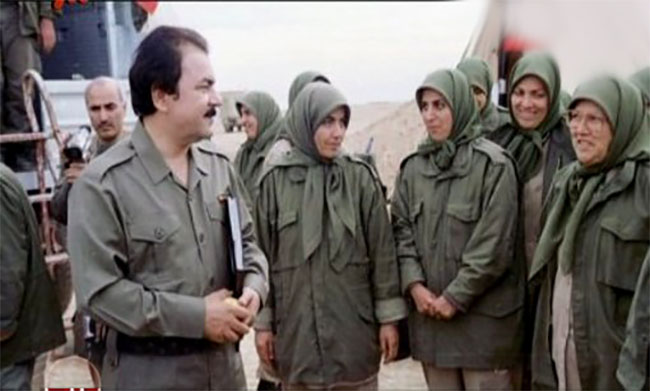In today’s world, forced marriage may seem like a time-worn phenomenon, but it still threatens few societies. Forced marriages are not specific to backward and underdeveloped societies, but may occur anywhere in the world. Many cults forcibly marry men and women in developing and developed countries. Organizational marriage is a type of forced marriage that was common in the Mujahedin-e Khalq (MEK) and in a way showed the commitment of members to the goal of the organization and adherence to the cause of its leaders.
Although MEK achieved considerable notoriety for its cultish regulations in compelling members to divorce their spouses, it should be noted that forced marriage was part of the MEK’s organizational relationship before the mandatory divorce and for so long many forced marriages took place as stipulated by the MEK leadership. In this regard, Ahmad Reza Karimi writes in his book entitled A Description of the History of Mujahedin-e Khalq of Iran and Its Stand Point:
“Since its inception till 1973, the MEK was a male-dominated organization and had no female members. The necessity for covering their hubs has led the organization to use women and girls. The first female recruits were the relatives of the executed or killed members and prisoners of the organization … At that time, Reza Rezaei had two marriages within the organization, which was in fact the cornerstone of moral corruption: The first marriage was with Leila Zomordian (Sharif Vaqefi’s next wife) and his second marriage was with Simin Salehi, who after hiding in early 1973 was not even legally separated from her former husband. Some women and girls did not even have the least political or organizational capabilities and were kept in the organization only to justify the hubs as well as sexual exploitation. A telling example of this is a member like Leila Zomordian, who after Reza Rezaei and Sharif Vaqefi, married to Taghi Shahram for a short period of time, and then changed her husband several times in different houses.”

MEK members’ suicides as a result of moral and sexual failures and frustrations … The MEK leaders’ monopoly in sexual matters is also one of the important consequences of such corruption. Taqi Shahram, one of the ideologues of the MEK, married to five wives during his activity … Another implication of moral corruptions in the organization is sexual suicides, which were caused by moral and sexual failures and frustrations.
Misguided beliefs justify sexual exploitations
Jafar Shojooni says in his memoirs: The MEK’s interpretation of Quran was weird. How is it that two or three hijabi pious girls live and sleep with ten or twenty young boys for six months? They recited this verse to those girls: “…Do not reveal their adornments except to their husbands” (Quran, 24:31). The verse says that positions of adornment that are above the neck and above the hands should not be shown except to women’s husbands, but within the MEK it is being interpreted in a different way, saying that the parts of adornment are “from the knees to the abdomen” that should be hidden from anybody except from their comrades in arms.
The theory of the ideological revolution was completed in 1986, when Maryam Azodanlu (Rajavi) divorced her husband Mehdi Abrishamchi and married to Massoud Rajavi before the expiration of the waiting period.
They used the same strategy to sexually exploit young women and girls and termed it as a sacred act as “marriage”. For example, Mehdi Abrishamchi was presented with Mousa Khiabani’s 18-year-old sister as a gift from the leadership!
Forced divorce and ideological revolution
Right after the Iran-Iraq ceasefire in mid-1988, MEK launched thousands of its warriors across the Iranian border, but they suffered a humiliating defeat. Masoud Rajavi announced a plan calling it an ideological revolution and considered the failure as a result of members’ family ties. Hence, he ordered all the members to divorce their spouses. Even the single members made a commitment to forbid marriage. The other side of the coin were divorced women who obeyed Rajavi’s command and married him during a cultish ceremony called “Salvation Dance”. In this regard, female members Batool Soltani, Homeira Mahmoudnejad, Zahra Moeini and Nasrin Ebrahimi are the people who have exposed such behaviors in MEK after defection.
Organizational marriages, forced divorces, hysterectomies, and the like are all rooted in the cultish aspects of the MEK. Those people who had wasted their youth in the cult of MEK warn that joining cults is one of the greatest threats of every nation.
This issue is now considered as a threat and has been introduced as the highest social harm and being in a cult is more terrible than addiction. Women are the mainstay of the family in all societies and such cultish behaviors have destructive effects on societies. So, in order to save women, families, and societies, the cults and their cultish thinking and practices must come to an end.
